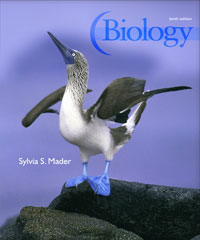1 A) the pie crust B) the plate on which the pie is served C) the whole pie D) the pie filling 2 A) population B) community C) ecosystem D) biosphere 3 A) population B) community C) ecosystem D) biosphere 4 A) animal structures and functions of those structures B) how organisms adapt to a changing environment C) the interactions between organisms and the physical environment D) how living things are organized and classified 5 A) describe the interactions between organisms and the physical environment B) develop models that explain and predict the distribution and abundance of organisms C) analyze levels of organization and develop models and hypotheses that can be tested D) All of these 6 A) uniformly B) randomly C) in clumps 7 A) all organisms B) all predators C) soil, water, and weather D) all organisms, soil, water, and weather 8 A) bioengineering B) taxonomy C) evolution D) pathology 9 A) random B) uniform C) clumped 10 A) the rate of immigration B) the rate of emigration C) the death rate 11 A) the birth rate exceeds the death rate B) emigration exceeds immigration C) mortality exceeds natality 12 A) produce offspring that survive dryness and/or cold B) expend all their energy in reproduction and then die C) are members of populations that have discrete patterns of growth D) All of these 13 A) a limited supply of food B) an accumulation of waste products C) predation D) All of these 14 A) growth is slow B) growth is accelerating C) there is little if any growth 15 A) biotic potential B) carrying capacity C) exponential growth D) environmental resistance 16 A) environmental resistance B) extinction C) resource partitioning D) exponential growth 17 A) logistic B) exponential C) None of these 18 A) provide little or no care for their offspring B) require large ranges C) easily colonize new habitats D) adapt easily when their normal way of life is destroyed 19 A) Competition B) Drought C) Accidental fire D) Earthquake 20 A) dominance hierarchies B) emigration C) territoriality D) All of these














